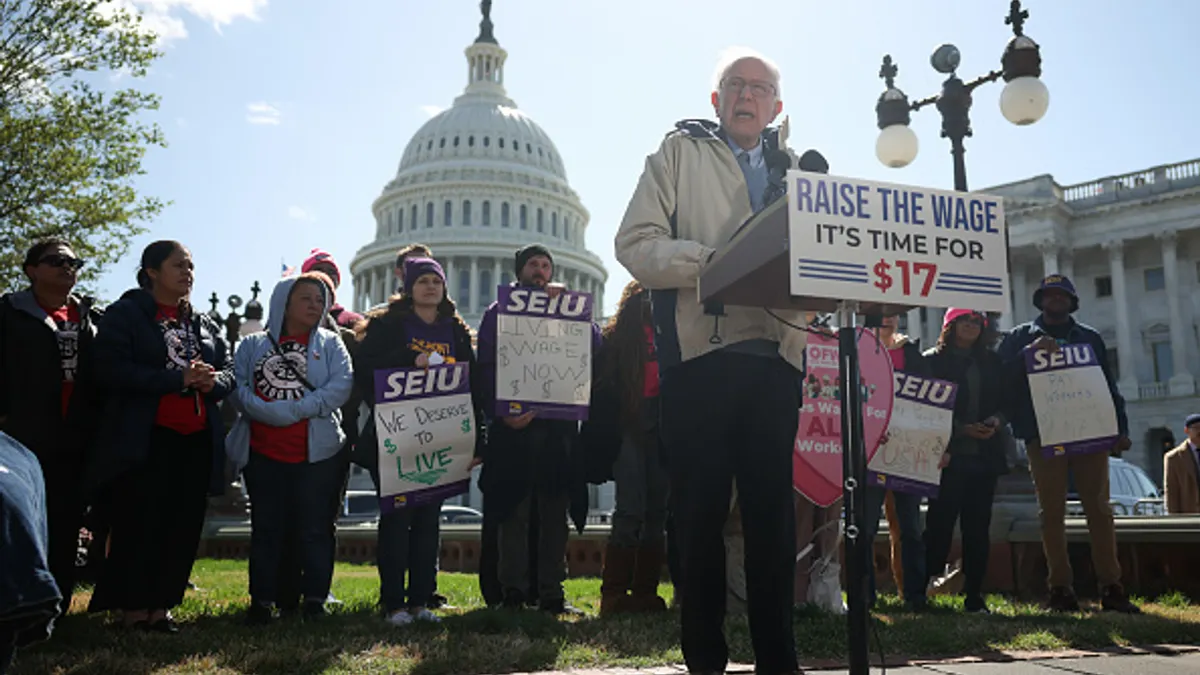WASHINGTON, D.C. — The topic of worker classification may trigger anxiety for HR professionals, and rightfully so. Sometimes, of course, worker classification is simple; these days, it generally requires little effort to correctly declare and properly treat an employee as an employee. But what does it take to use and pay an independent contractor in such a way that doesn't result in a costly settlement or millions of dollars in back pay later on?
This question lacks a singular answer. In fact, many questions surrounding this topic lack simple, straightforward answers. Ballard Spahr LLP Partner Shannon Farmer, however, helped make sense of those worker classification questions at the National Employment Law Institute's recent Employment Law Update in Washington, D.C.
Making sense of independent contractors and the legislation defining them
Independent contractor status continues to reign as the trickiest area of worker classification because relevant case law changes rapidly. "We are seeing litigation on a daily basis," Farmer said. "The cases are all over the place, both on a federal level and a state level. This is an area where you see courts struggling with what to do with the gig economy and we're seeing legislative efforts that go in both directions."
A multitude of tests used to determine independent contractor status makes matters even more complicated, Farmer said. The U.S. Equal Employment Opportunity Commission has a test. The Internal Revenue Serve has a test. The U.S. Department of Labor (DOL) has a test. "The common law test talks about the right of control," she said.
But what does control mean? Farmer conjured two examples to illustrate two extremes of control. Consider the plumber, who responds to a call from a local business with a leaky faucet. The business calls the plumber because the plumber has the skills and the equipment that the business lacks. "That is the prototypical independent contractor," Farmer said. This allows for the other extreme, someone who comes into the business' building every day, has an office, a phone and a business card. "That is not an independent contractor. How is that person in any scenario an independent contractor?" Farmer said.
These examples help, but only to a point. "We have these two extremes that are really clear, and then we have a huge gray area in the middle," she said. That gray area contains companies like Uber, Lyft and Grubhub, Farmer said, ticking off a few common examples. "We don't have a lot of clarity here and it's going to continue until we have a legislative fix," she said.
The powerful legacy of Dynamex
Some states have delivered a judicial fix; most notably, California's Dynamex ruling, which instituted the ABC test that assumes those being tested are employees. "This is the most restrictive test that exists for determining who is an independent contractor," Farmer said. And just because this is a state law doesn't mean employers not operating in California can ignore it. "This ABC test is not limited to California," Farmer said. "The ABC test is used in many states."
The ABC test places the burden of proving a worker's independent contractor status on the employer. To do so, it must show that the worker meets all three of the test's criteria:
- The worker is free from the control of employment. "This is important, especially as we see it catching," Farmer said.
- The worker carries out work outside the usual course of business for the company or outside the places of business.
- The person must be engaged in another business. "You can't be their only job. You can't be the only customer," Farmer said.
There's also an effort to address the issue legislatively in California.
Movement on the federal front
Legislative activity has occurred at the federal level, too, although no singular standard or test has emerged. Last summer, DOL issued guidance on independent contractors, but only regarding home healthcare workers. "It's useful but limited," Farmer said. The guidance provides some examples and clarifies that organizations would not make workers employees by conducting background tests or providing workers basic training on legal compliance.
Still, the guidance left some questions unanswered, according to Farmer. "If you have independent contractors who perform core services for your business, how can you make sure those services get performed without making sure people show up? Or that they're performing quality services so that you don't lose all your customers?" she said. "We don't have clear answers, even from that."
This spring, DOL issued an opinion letter delving into another single section of the gig economy, this time virtual marketplace companies. In the letter, DOL determined service providers working for the companies were independent contractors.
What about joint employment?
Complicating matters is joint employment, and Farmer reminded attendees that there are two kinds. One type embodies the format of a health system with multiple hospitals. This applies to related entities like sister companies. When workers work for more than one, this creates a tricky situation; as they accrue hours at multiple locations each week, they must be paid overtime once they pass the 40-hour mark, even if they put in less than 40 hours at each individual location. The other type takes on the structure of a service provider or staffing agency. This creates an additional layer of analysis in determining joint employer status because, often, an employer will hire employees from such an agency, but the agency isn't treating employees like employees, Farmer said.
Employers should be aware of DOL's 4-factor test for joint employment liability it proposed in April, Farmer said. The test is a "radical departure" from how joint employment has traditionally been treated — it stands against now-rescinded Obama-era guidance in particular. "Cases have traditionally looked at joint employment looking at economic dependence. DOL said that doesn't matter," Farmer said.
The test assesses whether a possible joint employer: 1) hires or fires the employee in question; 2) supervises and controls the worker's schedule or conditions of employment; 3) determines the employee's rate and method of payment; and 4) maintains the employee's employment records. The test doesn't consider business arrangements or factors such as specialized work, profit or loss and employee investment in materials. It's only looking for control, Farmer said.
A reminder about interns before intern season
Interns who aren't getting paid need to get something out of their working experience. DOL laid out a test for this in a fact sheet. The test examines seven factors:
- "The extent to which the intern and the employer clearly understand that there is no expectation of compensation. Any promise of compensation, express or implied, suggests that the intern is an employee — and vice versa.
- The extent to which the internship provides training that would be similar to that which would be given in an educational environment, including the clinical and other hands-on training provided by educational institutions.
- The extent to which the internship is tied to the intern's formal education program by integrated coursework or the receipt of academic credit.
- The extent to which the internship accommodates the intern's academic commitments by corresponding to the academic calendar.
- The extent to which the internship's duration is limited to the period in which the internship provides the intern with beneficial learning.
- The extent to which the intern's work complements, rather than displaces, the work of paid employees while providing significant educational benefits to the intern.
- The extent to which the intern and the employer understand that the internship is conducted without entitlement to a paid job at the conclusion of the internship."
To sum it up, having unpaid interns "is not a license to bring people in and have them do nothing but grunt work," Farmer said.
Last but not least: volunteers
There are just a few criteria non-profit and public sector employers must meet to properly use volunteers (DOL says private, for-profit employers may not use volunteers at all). First, volunteers must come voluntarily, Farmer said. And the they cannot have an expectation of compensation.
This becomes more complicated when employees working for non-profit organizations want to volunteer their time or services. This becomes possible based on the nature of the volunteer work and activities, Farmer said. DOL holds that employees can volunteer for their non-profit employers if the work is not related to their paid work, according to Farmer.



















